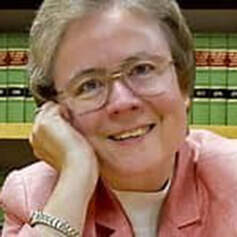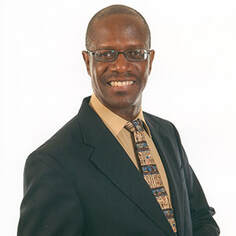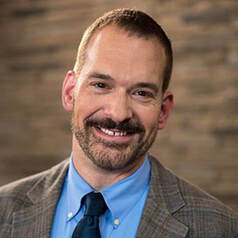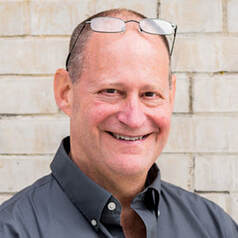MCIGS 2023 Summer Conference
Saturday, July 8, 2023
8:30 am - 3:30 pm CDT
In-Person at McHenry County College
McHenry County College (MCC), 8900 US Highway 14, Crystal Lake, IL 60012
8:30 am - 3:30 pm CDT
In-Person at McHenry County College
McHenry County College (MCC), 8900 US Highway 14, Crystal Lake, IL 60012
Conference Registration
Registration begins March 1 and ends on July 1, 2023.
This conference will be held in-person at McHenry County College in Crystal Lake, IL. Sessions will be recorded and available to registrants after the conference.
Holiday Inn in Crystal Lake will give a discounted rate for attendees. Call 1-800-465-4329 (1-800-Holiday) and give them the event name: McHenry County Genealogical Society, Code: MDG.
- MCIGS Members = $55
- Non-members = $65
- Recording after event = $45 (available the week after the conference for one month)
This conference will be held in-person at McHenry County College in Crystal Lake, IL. Sessions will be recorded and available to registrants after the conference.
Holiday Inn in Crystal Lake will give a discounted rate for attendees. Call 1-800-465-4329 (1-800-Holiday) and give them the event name: McHenry County Genealogical Society, Code: MDG.
Speakers

Judy G. Russell, JD, CG, CGL
The Legal Genealogist
A genealogist with a law degree. She is known for The Legal Genealogist. Judy has lectured across the U.S. and around the world. In addition, she has written a number of articles for various genealogical magazines.
The Legal Genealogist
A genealogist with a law degree. She is known for The Legal Genealogist. Judy has lectured across the U.S. and around the world. In addition, she has written a number of articles for various genealogical magazines.

Timothy N. Pinnick
Researcher, National Speaker, and Author
Tim describes himself as an independent scholar, author, lecturer and entrepreneur. He is the author of Finding and Using African American Newspapers. Tim has served on the boards of the Association of Professional Genealogists and Federations of Genealogical Societies.
Researcher, National Speaker, and Author
Tim describes himself as an independent scholar, author, lecturer and entrepreneur. He is the author of Finding and Using African American Newspapers. Tim has served on the boards of the Association of Professional Genealogists and Federations of Genealogical Societies.

Dr. Michael D. Lacopo, DVM
International Speaker and Author
Dr. Lacopo has written several books and journal articles relating to genealogy and has lectured in the U.S. and around the world. He is a life-long resident of northern Indiana. He has research experience in Mennonite families, Pennsylvania Germans and other areas.
International Speaker and Author
Dr. Lacopo has written several books and journal articles relating to genealogy and has lectured in the U.S. and around the world. He is a life-long resident of northern Indiana. He has research experience in Mennonite families, Pennsylvania Germans and other areas.

James M. Beidler
Researcher, Speaker, and Author
James M. Beidler is the Interim Executive Director for the Genealogical Society of Pennsylvania. He is the author of four genealogy books as well as writing “Roots & Branches,” an award-winning weekly blog/newspaper column on genealogy. Jim is also an Enrolled Agent Tax Preparer.
Researcher, Speaker, and Author
James M. Beidler is the Interim Executive Director for the Genealogical Society of Pennsylvania. He is the author of four genealogy books as well as writing “Roots & Branches,” an award-winning weekly blog/newspaper column on genealogy. Jim is also an Enrolled Agent Tax Preparer.
Schedule
|
8:30 – 9:00 am
9:00 – 10:00 am 10:00 – 10:30 am 10:30 – 11:30 am 11:30 – 1:00 pm 1:00 – 2:00 pm 2:00 – 2:30 pm 2:30 – 3:30 pm 3:30 |
Registration
1st Session Break (downstairs) 2nd Session LUNCH (downstairs). Please visit vendors and choose door prizes. 3rd Session Break (downstairs). Be sure to check out door prizes. 4th Session END OF DAY Thanks for coming!! |
Sessions
JUDY G. RUSSELL
How Old Did He Have To Be…?
Is this man John the father or John the son? Could that man be my ancestor who married in 1802? Knowing a person’s age is often the key to distinguishing between two people of the same name. But if no record gives a birthdate, how do you know how old someone was? The law can often give the answer.
“Death by Undue Means”
Coroner’s Records From colonial times to today, death not attributable to natural causes required investigation. Elected or appointed coroners worked with local juries to determine more about what caused each death. Learn more about coroner's records and how to use them in genealogy.
Dower and Dowry: Women, Property, & Legal Records
Bringing property into marriage or trying to take it out, our female ancestors were governed by laws that generated valuable records. Learn about the common law dower and the civil law dowry, how they differed, and how to find the stories the records tell.
Linking the Generations with Court and Land Records
It’s the single biggest issue genealogists face: how do we connect one generation to the next with evidence we can rely on? Vital records are excellent documentation, but they often don’t exist for the time and place we’re researching. That’s when we have to find workarounds to make sure we’re not simply putting people into family lines because they share the same names. Using court and land records, we can often find the evidence we need to link the generations accurately.
How Old Did He Have To Be…?
Is this man John the father or John the son? Could that man be my ancestor who married in 1802? Knowing a person’s age is often the key to distinguishing between two people of the same name. But if no record gives a birthdate, how do you know how old someone was? The law can often give the answer.
“Death by Undue Means”
Coroner’s Records From colonial times to today, death not attributable to natural causes required investigation. Elected or appointed coroners worked with local juries to determine more about what caused each death. Learn more about coroner's records and how to use them in genealogy.
Dower and Dowry: Women, Property, & Legal Records
Bringing property into marriage or trying to take it out, our female ancestors were governed by laws that generated valuable records. Learn about the common law dower and the civil law dowry, how they differed, and how to find the stories the records tell.
Linking the Generations with Court and Land Records
It’s the single biggest issue genealogists face: how do we connect one generation to the next with evidence we can rely on? Vital records are excellent documentation, but they often don’t exist for the time and place we’re researching. That’s when we have to find workarounds to make sure we’re not simply putting people into family lines because they share the same names. Using court and land records, we can often find the evidence we need to link the generations accurately.
TIMOTHY N. PINNICK
Navigating the World of Newspaper Research
When it comes to diving into this essential work, too many researchers are tentative, unsure or overwhelmed. There is a massive amount of material online in numerous databases, not to mention the offline microfilm collections and print resources. Learn how to confidently and consistently incorporate this tool into your research strategy.
John Brown Post 50 of the Grand Army of the Republic: Case Study
Post 50 in Chicago, with its auxiliary organization, was a vibrant part of their community. A group that was forever linked by their Civil War experiences and comradeship. Chartered in 1879, the organization survived for over 50 years and many aspects of their existence lay in a variety of document that paint a vivid picture of a unique band of brothers.
Incorporating University Libraries in Your Research Plans
University libraries have tremendous value for the genealogist and are worth the time investment. Many can be accessed both on campus and off. We’ll do a primer on what to expect when doing 21st century library research and explore the library’s sweet spots.
The United Mine Workers Journal as a Tool for All Researchers
The UMWJ, founded in 189, was anything but a dry, uninteresting paper with a focus on technical coal mining topics. Coal miners had collateral lines, not to mention their connections to a wider network of relatives, friends, and neighbors – these folks are well represented here. Add to that the local farmers, merchants and others the coal mining community contracted and interacted with.
Navigating the World of Newspaper Research
When it comes to diving into this essential work, too many researchers are tentative, unsure or overwhelmed. There is a massive amount of material online in numerous databases, not to mention the offline microfilm collections and print resources. Learn how to confidently and consistently incorporate this tool into your research strategy.
John Brown Post 50 of the Grand Army of the Republic: Case Study
Post 50 in Chicago, with its auxiliary organization, was a vibrant part of their community. A group that was forever linked by their Civil War experiences and comradeship. Chartered in 1879, the organization survived for over 50 years and many aspects of their existence lay in a variety of document that paint a vivid picture of a unique band of brothers.
Incorporating University Libraries in Your Research Plans
University libraries have tremendous value for the genealogist and are worth the time investment. Many can be accessed both on campus and off. We’ll do a primer on what to expect when doing 21st century library research and explore the library’s sweet spots.
The United Mine Workers Journal as a Tool for All Researchers
The UMWJ, founded in 189, was anything but a dry, uninteresting paper with a focus on technical coal mining topics. Coal miners had collateral lines, not to mention their connections to a wider network of relatives, friends, and neighbors – these folks are well represented here. Add to that the local farmers, merchants and others the coal mining community contracted and interacted with.
DR. MICHAEL D. LACOPO
Using Tax Records for Genealogical Problem Solving
Tax records are going to be found within multiple jurisdictions from federal to local, and they will be equally as varied. Learn how they can work for you.
She Bore Her Suffering with Christian Fortitude: Using Religious Newspapers and Periodicals
Many religious publications published death notices and related items decades before such information could be found with any regularity in secular newspapers. Learn how to use and what you might find.
She Came from Nowhere: A Case Study Approach to a Difficult Genealogical Problem
This lecture employs a problem-solving approach utilizing social history, female research and family analysis to identify the parents of Elizabeth Stith, the ancestor “from nowhere.” This case study allows you to see the Genealogical Proof Standard at work.
A Primer of Disease that Killed Our Ancestors and the Epidemics They Lived Through
Many early diseases killed thousands of people. Learn what those diseases were and how they impacted your ancestors.
Using Tax Records for Genealogical Problem Solving
Tax records are going to be found within multiple jurisdictions from federal to local, and they will be equally as varied. Learn how they can work for you.
She Bore Her Suffering with Christian Fortitude: Using Religious Newspapers and Periodicals
Many religious publications published death notices and related items decades before such information could be found with any regularity in secular newspapers. Learn how to use and what you might find.
She Came from Nowhere: A Case Study Approach to a Difficult Genealogical Problem
This lecture employs a problem-solving approach utilizing social history, female research and family analysis to identify the parents of Elizabeth Stith, the ancestor “from nowhere.” This case study allows you to see the Genealogical Proof Standard at work.
A Primer of Disease that Killed Our Ancestors and the Epidemics They Lived Through
Many early diseases killed thousands of people. Learn what those diseases were and how they impacted your ancestors.
JAMES M. BEIDLER
Time and Place – Using Genealogy’s Cross Hairs
Learn how understanding an area’s history will help you with your research. Putting your ancestors in time and place will help you do the most thorough of searches.
Zigzagging Through German Church Records
Explaining the methodology of using baptismal, confirmation, marriage and burial records from German church registers most effectively. Utilizing the different bits of information found in each will let researchers zigzag their way to adding centuries to a pedigree.
Your Immigrants’ Germany: Microstates and Microbreweries
A concise history of Germany; details of some types of records affected by disunity, major state by major state. Case studies of some microstates as examples.
Secondary Uses for Primary Sources
Learning how to use whole date sets rather than individual records can blast open genealogical roadblocks by exploring the interrelationships of a whole community.
Time and Place – Using Genealogy’s Cross Hairs
Learn how understanding an area’s history will help you with your research. Putting your ancestors in time and place will help you do the most thorough of searches.
Zigzagging Through German Church Records
Explaining the methodology of using baptismal, confirmation, marriage and burial records from German church registers most effectively. Utilizing the different bits of information found in each will let researchers zigzag their way to adding centuries to a pedigree.
Your Immigrants’ Germany: Microstates and Microbreweries
A concise history of Germany; details of some types of records affected by disunity, major state by major state. Case studies of some microstates as examples.
Secondary Uses for Primary Sources
Learning how to use whole date sets rather than individual records can blast open genealogical roadblocks by exploring the interrelationships of a whole community.
Lunch
All sandwiches will be on a baguette accompanied by greens, pickle, chips, cookie. Drinks will be available. There is a gluten-free option on multi-grain bread. For the sandwich, you can choose between beef, turkey, ham, or veggie.